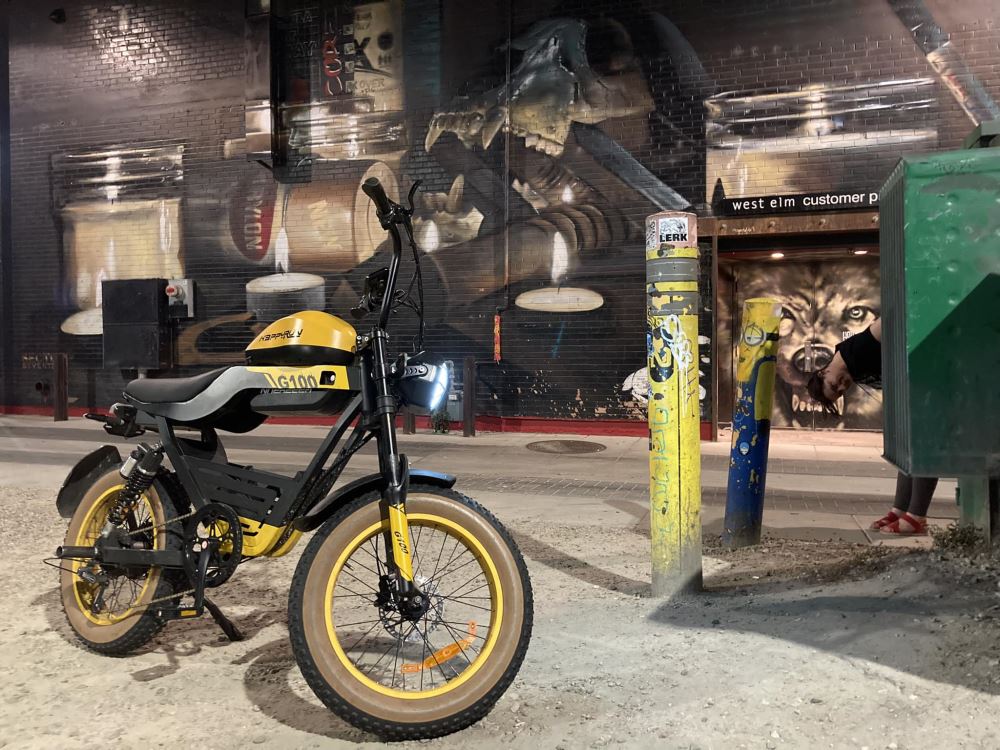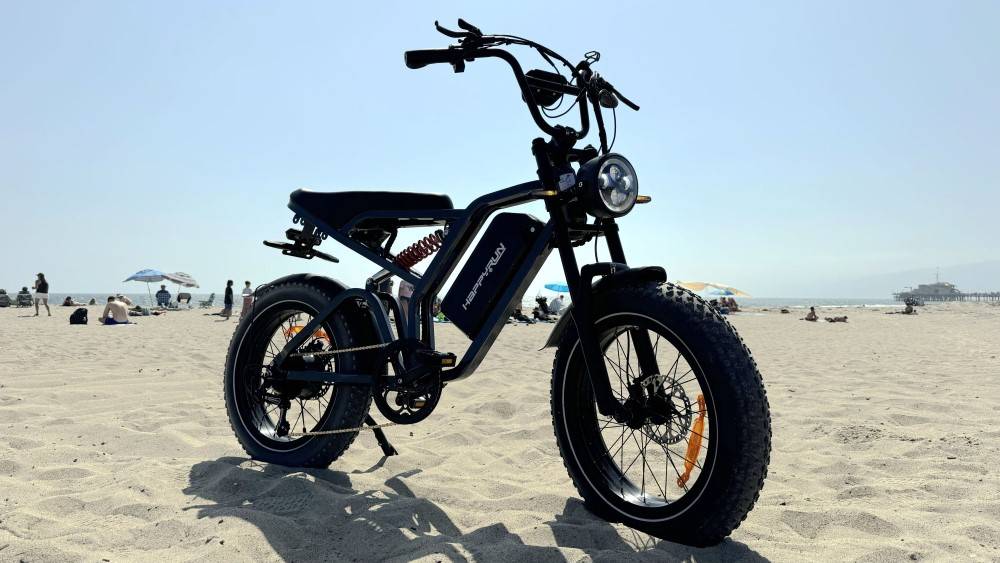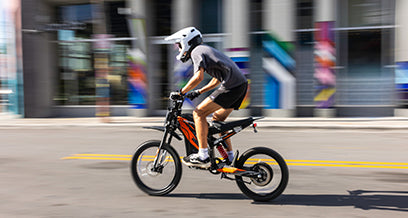
Are E-Bikes Street Legal?
Yes, e-bikes are street legal in most areas, but regulations vary by location. Generally, Class 1 and Class 2 e-bikes are allowed on roads and bike paths, while Class 3 e-bikes may have restrictions. Always check local laws before riding.
E-bikes are generally street legal in the U.S., but rules vary by state and city. Most places allow e-bikes with motors under 750W and speeds up to 20-28 mph without a license. Always check local laws for specific restrictions, including where you can ride and any required safety gear.
E-bikes are becoming increasingly popular as an eco-friendly mode of transportation. Let's dive into the details to understand the legal requirements for e-bikes and what you need to know before hitting the road.
How Are Electric Bikes Defined Under the Law?
Electric bikes are typically defined as bicycles with electric motors, limited to a maximum speed and power output. Most jurisdictions classify e-bikes into three categories based on speed and pedal assistance.
In many jurisdictions, ebikes must have functional pedals and meet specific power and speed limits to be classified as bicycles rather than motor vehicles. Compliance with these criteria ensures they can be ridden without a license or registration.
What Are the Different Classes of E-Bikes?
E-bikes are categorized into different classes based on their design and functionality:
- Class 1: Pedal-assist only; motor engages only when pedaling and stops at 20 mph.
- Class 2: Throttle-assisted; can operate without pedaling but stops at 20 mph.
- Class 3: Pedal-assist only; motor assists while pedaling up to 28 mph.
Understanding these classes helps riders determine where they can legally ride their e-bikes. Some places do not differ at all and place all the e-bikes in the same category; others have varying regulations, which is why it is important to look them up and educate yourself before you head out to the roads.
Federal And State Regulations
The U.S. federal law defines e-bikes as bicycles if they have a motor under 750W and a speed limit of 20 mph. However, state laws vary, with some requiring registration, helmets, or restricted usage in specific areas.
However, state laws can change from place to place. Some states have adopted the three-class system mentioned above, while others have their own unique regulations. For instance, California has comprehensive laws that align closely with the three-class system, allowing Class 1 and Class 2 e-bikes on bike paths but restricting Class 3 e-bikes to roads and bike lanes next to roads.
At the federal level, the Consumer Product Safety Act classifies e-bikes as bicycles if they meet specific criteria:
- They must have fully operable pedals.
- They feature an electric motor of less than 750 watts (1 horsepower).
- Their maximum assisted speed is 20 mph.
So here's the deal: this classification actually exempts e-bikes from all those strict regulations that regular motor vehicles have to follow. But… there's a catch. State and local laws can still slap on some extra requirements, which vary as you move along the states. Some of the most prominent regulations are explained briefly below:
Alabama
Classification: E-bikes are considered motorized vehicles.
Age and Safety: Riders must be at least 14 years old and wear helmets.
Usage Restrictions: E-bikes are not permitted on sidewalks or non-motorized trails.
Alaska
General Law: No specific e-bike laws; treated similarly to traditional bicycles.
Safety: Helmets recommended but not mandatory.
Arizona
Classification: Follows the three-class system:
Class 1: Pedal-assist up to 20 mph.
Class 2: Throttle-assist up to 20 mph.
Class 3: Pedal-assist up to 28 mph.
Licensing: No licensing or registration required.
Usage: E-bikes allowed on most roads and paths, subject to local regulations.
Arkansas
Age and Safety: Riders of Class 3 e-bikes must be at least 16 years old.
Usage: E-bikes permitted on bike paths and trails unless local laws prohibit them.
California
Classification: Uses the three-class system:
Class 1: Pedal-assist only, up to 20 mph.
Class 2: Throttle-assist, up to 20 mph.
Class 3: Pedal-assist, up to 28 mph.
Safety: Helmets required for Class 3 riders and those under 18.
Usage: Class 3 e-bikes are restricted to roads and bike lanes.
Colorado
Classification: Three-class system.
Safety: Helmets required for riders under 18.
Usage: E-bikes allowed on roads and bike paths, but Class 3 bikes are restricted from certain trails.
Connecticut
General Law: E-bikes treated as bicycles.
Safety: Helmets mandatory for riders under 16.
Local Variations: Specific local regulations may apply to e-bike usage on paths and trails.
Licensing: No license or registration required.
General Law: E-bikes treated as traditional bicycles.
Safety: Helmets required for riders under 16.
Georgia
Classification: Follows the three-class system.
Safety: Helmets mandatory for Class 3 riders and recommended for others.
Hawaii
General Law: E-bikes classified similarly to bicycles.
Safety: Helmets required for riders under 18.
Usage Restrictions: Restrictions apply to riding on sidewalks and certain paths.
Illinois
Classification: E-bikes fall under three classes.
Safety: Riders under 16 must wear helmets.
Local Variations: Local jurisdictions may impose additional restrictions.
Maryland
Classification: Three-class system.
Safety: Helmets required for riders under 16.
Usage: E-bikes allowed on most roads and paths, with specific local regulations.
Massachusetts
General Law: E-bikes must adhere to bicycle laws.
Safety: Helmets required for riders under 17.
Local Variations: Local jurisdictions may impose additional rules.
Michigan
Classification: Three-class system.
Safety: Helmets required for Class 3 riders.
Usage: E-bikes allowed on roads and certain bike paths.
Minnesota
General Law: E-bikes treated as bicycles.
Safety: No mandatory helmet laws, but recommended.
Usage: Permitted on roads and bike paths.
Missouri
General Law: E-bikes treated as bicycles.
Safety: No specific helmet requirements.
Usage: Allowed on roads, bike lanes, and certain trails.
New York
Classification: Three-class system.
Safety: Helmets required for Class 3 and riders under 18.
Usage: E-bikes can use bike lanes and roads but are restricted from some paths.
Ohio
Classification: Three-class system.
Safety: Helmets recommended for all, mandatory for Class 3.
Usage: Permitted on most roads and paths.
Texas
Classification: Three-class system.
Safety: Helmets recommended, mandatory for Class 3.
Usage: Allowed on roads, bike lanes, and specific trails.
Oregon
Classification: E-bikes classified under three classes.
Age: Riders must be at least 16 years old.
Usage: E-bikes are not allowed on sidewalks but can use designated paths and roads.
Washington
Classification: E-bikes classified into three classes.
Age: Riders must be at least 16 for Class 3.
Safety: Helmets required for Class 3 and recommended for others.
Are E-Bikes Street Legal?
Most e-bikes are legal on streets, but Class 3 models may be restricted from bike paths or sidewalks. Always follow local traffic laws and regulations when riding.
- Speed Limits: Many states restrict e-bikes to a maximum speed of 20 mph. This is a double-edged sword. It can either mean that your e-bike is not allowed to exceed speeds over 20 mph or the e-bikes in that state are regulated so that the ones that go over 20 mph are either not sold or have a different classification. You will have to check up on that, depending on where you live.
- Age Requirements: Some states have age restrictions for riding e-bikes, often requiring riders to be at least 16 years old. Since e-bikes can lead to potential speeding mishaps, it is necessary that responsible individuals be allowed to ride them. Since kids are always looking for adventures, an e-bike in their hand is a riding hazard.
- Helmet Laws: Helmet use is mandatory for e-bike riders in many states, particularly for younger riders and for higher-speed Class 3 e-bikes. Either way, it is best to use a helmet even if it is not specifically required by the law for your own safety.
- Licensing and Registration: Most states do not require a license or registration for e-bikes, but this can vary. For example, New York City recently legalized e-bikes but requires registration. Check with your local council to avoid any confrontation with the law and to keep riding your e-bike peacefully.

Where Can You Ride Electric Bikes Legally?
E-bikes can typically be used on bike lanes, roads, and multi-use paths. Some areas restrict higher-speed models on sidewalks or trails. Always verify local e-bike regulations before riding.
The legality of riding e-bikes depends on local regulations. Generally, e-bikes can be ridden on:
- Roads: Most states allow e-bikes on public roads where bicycles are permitted.
- Bike Lanes: Many jurisdictions permit e-bikes in designated bike lanes.
- Trails and Paths: Some areas allow e-bikes on multi-use paths, but this varies by location.
What Are the Requirements for Riding E-Bikes?
Requirements for riding e-bikes typically include being of legal age (often 14 or older), wearing a helmet (especially for Class 3), and ensuring the e-bike meets local power and speed regulations. Some jurisdictions may require registration or insurance for higher-powered models.
To ride an e-bike legally, several requirements typically apply:
- Age Restrictions: Many states require riders to be at least 14 or 16 years old, depending on the class of e-bike.
- Helmet Use: Some jurisdictions mandate wearing a helmet while riding an e-bike.
- Lights and Reflectors: Riders may need to equip their e-bikes with lights and reflectors when riding at night.
Familiarizing yourself with these requirements is essential for safe riding.
What Are the Safety Requirements for E-Bike Riders?
Safety requirements for e-bike riders often include wearing helmets, especially for Class 3 e-bikes, and adhering to traffic laws applicable to bicycles. Some regions may mandate additional safety gear or training courses to enhance rider awareness and safety on the road.
- Wearing Helmets: Many regions require riders to wear helmets for safety.
- Using Lights: Proper lighting is essential when riding at night or in low visibility conditions.
- Following Traffic Rules: Riders must obey all traffic signals and signs, just like traditional cyclists.
Adhering to these safety measures helps ensure a safer riding experience.
When Are E-Bikes Considered Motor Vehicles?
E-bikes are considered motor vehicles when they exceed defined power or speed limits or lack functional pedals. If an e-bike can operate without pedaling or surpasses local regulations, it may be classified as a motorcycle or moped, requiring registration, licensing, and insurance.
- Power Output Exceeding Limits: If an e-bike’s motor exceeds regulatory limits (e.g., over 750 watts), it may be classified as a motor vehicle.
- Speed Capabilities: If an e-bike can exceed designated speed limits without pedaling, it may also fall under motor vehicle regulations.
Riding E-Bikes in Cities
City regulations can also impact where you can ride your e-bike. Many urban areas have specific rules to manage e-bike traffic. This allows them to ensure safety for both riders and pedestrians/other vehicles. For instance, in New York City, Class 1 and Class 2 e-bikes are allowed on streets with speed limits of 30 mph or less. However, in the case of Class 3 e-bikes, they are restricted to specific areas. Again, check with your local council to know if you are in defiance of the local regulations. Remember, ignorance of the law is no excuse.
Off-Road and Bike Path Use
When it comes to using e-bikes on bike paths, trails, and other non-road environments, the rules can vary even more. In general, Class 1 e-bikes are the most commonly accepted on bike paths and multi-use trails. This is because they require pedaling and have a lower maximum speed.
Sadly, Class 2 e-bikes, due to their throttle-assist feature, and Class 3 e-bikes, due to their speed, are often restricted to bike lanes and roads. It is a little frustrating for many e-bike users, but it is the passion for e-bikes that enables people to bear these rules and ride their beloved vehicles as per the regulations.
E-bikes are permitted on some off-road trails, but restrictions apply based on local laws and land management policies. National parks and private trails may prohibit e-bikes, especially higher-speed models.
How Do E-Bike Regulations Vary by Country?
E-bike laws differ worldwide. The U.S., EU, and Canada regulate e-bikes based on power and speed limits, while some Asian countries impose stricter licensing and registration requirements. Always check local e-bike laws before riding abroad.
For example, in the U.S., federal law defines low-speed electric bicycles with specific power limits, while states may impose additional rules. In Europe, regulations often focus on power output and speed limits, with different classifications affecting usage rights. For example, if you are going to Europe, they generally classify e-bikes under the EN15194 standard, which restricts them to a maximum motor power of 250 watts and a top speed of 25 km/h (about 15.5 mph). This standard puts them up closely with the Class 1 and Class 2 classifications in the U.S. But due to stricter enforcement it means that you need to be aware of local regulations when riding abroad.
E-bike regulations differ significantly across countries:
- United States: Regulations vary by state; many states have adopted a three-class system.
- European Union: The EU has specific regulations that classify e-bikes similarly to traditional bicycles if they do not exceed certain power and speed limits.
- Australia: Australian states have their own rules regarding maximum power output and speed limits for e-bikes.
Buying Tips
When purchasing an electric bike, consider models that comply with local regulations regarding power output and speed limits. Look for reputable brands like HappyRun, known for their innovative designs and commitment to quality since their establishment in 2014. Evaluate features such as battery capacity, motor type, and frame design to find an e-bike that fits your needs effectively while adhering to legal requirements.
E-Bike Expert Views
“Understanding the legal landscape surrounding electric bikes is essential for any rider,” says biking expert John Doe. “Riders should always familiarize themselves with local laws to ensure safe and compliant use of their e-bikes.”
Important Tip for E-Bike Riders
If you are riding your e-bike, whether locally or abroad, remember the following tips:
Know Your Local Laws
Regulations can vary significantly from one place to another. Always check local laws to ensure compliance. If you are moving from one place to another, make sure to reach out to your local council so you can learn if there are any changes in comparison to the previous rules you have been following. For all you know, the new place may even have more lenient laws.
Safety First
Regardless of legal requirements, wearing a helmet and following traffic rules is crucial for your safety. Make sure to always check your e-bike before heading out. Check the air in the tires, battery charge, and if the brake light and turning indicators are working.
Stay Informed
E-bike regulations are evolving. Stay updated on any changes in the law that might affect where and how you can ride.
To sum it all up, the answer to the question, "Are e-bikes street legal?" is Yes! But the specifics vary from place to place. Most places allow e-bikes on roads and bike lanes, but there are often speed limits, age requirements, and other regulations to consider. Whether you're commuting in the city or exploring bike paths, understanding the laws in your area will help you ride legally and safely. Always check local regulations and ensure your e-bike complies with the relevant laws.
FAQs
What are the main differences in e-bike laws between states in the US?
E-bike laws in the US vary by state, particularly regarding speed limits, age requirements, and helmet use. Some states classify e-bikes by power and speed, while others treat them similarly to traditional bicycles. Access to bike lanes and trails also differs based on local regulations.
How do e-bike laws vary between countries like the US, UK, and Australia?
The US allows e-bikes with a 750W motor and speeds up to 28 mph, while the UK limits motor power to 250W and speed to 15.5 mph. Australia follows similar speed rules but allows higher motor power up to 1,000W in some states. Licensing and helmet requirements also vary.
Are there any states where e-bikes are completely banned from public roads?
No US state completely bans e-bikes from public roads. However, some states impose restrictions on specific classes or prohibit e-bikes from certain trails or paths, depending on local regulations.
What are the penalties for riding an e-bike illegally?
Penalties for illegal e-bike use may include fines, confiscation of the e-bike, or being prohibited from using bike lanes. The severity depends on the violation, such as exceeding speed limits, riding in restricted areas, or not following helmet or licensing requirements.
How do local municipalities enforce e-bike regulations?
Local municipalities enforce e-bike laws through routine patrols, speed monitoring, and public awareness campaigns. Violations are typically addressed by law enforcement officers, who issue warnings or fines for non-compliance with speed limits, helmet use, or restricted access rules.
































Leave a comment